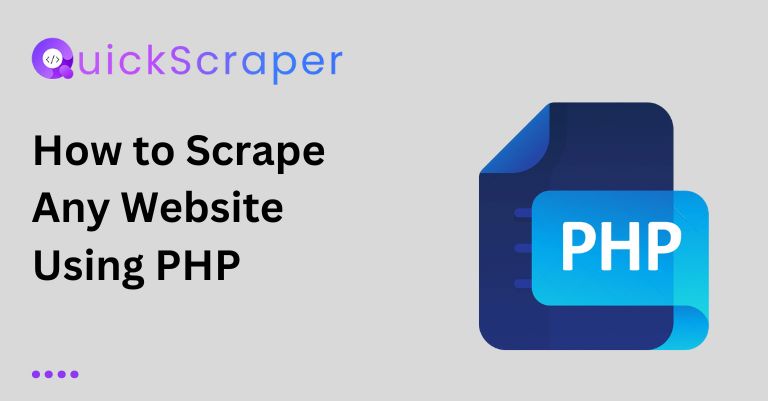
How to Scrape Any Website Using PHP
How to Scrape Any Website Using PHP Do you hate manually copying and pasting data from websites? With web scraping, you can automate the process
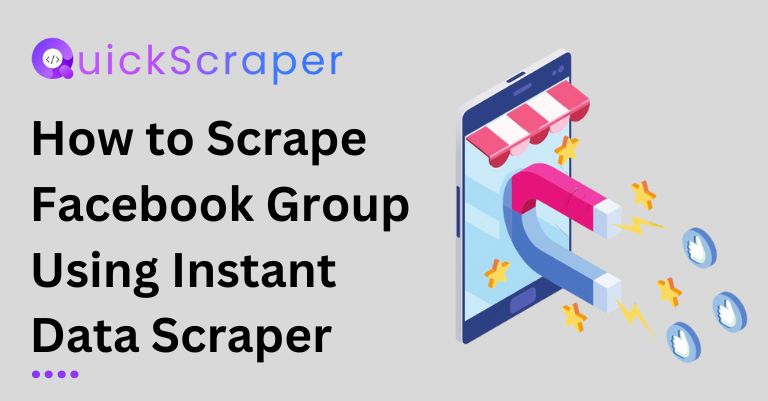
With the help of web scraping, you can uncover the valuable data contained within Facebook groups. With the help of this guide, you will learn how to efficiently extract data from groups by following step-by-step instructions on how to set up a web scraper. Get insights, monitor trends, and gain a competitive advantage through an automated data collection process from the powerful social platform that collects and analyzes the information you need. Learn how to extract data from a Facebook Group quickly using Quick Scraper, the best instant data scraper.
Install Required Libraries Before we begin, we need to ensure that we have the necessary Python libraries installed. Open your terminal or command prompt and run the following command:
pip install mechanicalsoup requests beautifulsoup4
This command will install the mechanicalsoup, requests, and beautifulsoup4 libraries, which are required for our code to function correctly.
Import Libraries At the beginning of our code, we import the required libraries:
import mechanicalsoup
import requests
from bs4 import BeautifulSoup
import csv
import json
mechanicalsoup is used for browser automation and simulating user interactions.requests is used for making HTTP requests to fetch web pages.BeautifulSoup from the bs4 library is used for parsing HTML content.csv is imported for handling CSV files (although not used in this code).json is imported for handling JSON data, which is the format we’ll use to store our scraped data.Connect to the Website Next, we create a StatefulBrowser instance from the mechanicalsoup library and set up the access token and URL for the Facebook group we want to scrape:
# Connect to Website
browser = mechanicalsoup.StatefulBrowser()
access_token = 'L5vConM41B7pI1fWZYNh' # Replace with your access token
url = f"<https://api.quickscraper.co/parse?access_token={access_token}&url=https://www.facebook.com/groups/2770323333294139/>"
page = browser.get(url)
Replace 'L5vConM41B7pI1fWZYNh' with your own access token obtained from the Instant Data Scraper website (app.quickscraper.co). Also, replace '2770323333294139' with the ID of the Facebook group you want to scrape.
Parse HTML Next, we parse the HTML content of the fetched page using BeautifulSoup:
# Parse HTML
soup = BeautifulSoup(page.content, 'html.parser')
with open('output.html', 'w', encoding='utf-8') as file:
file.write(str(soup))
This code creates a BeautifulSoup object from the HTML content of the page, and we also save the parsed HTML to an output.html file for reference.
Find and Extract Post Data Now, we come to the core part of the code, where we find and extract the post data from the Facebook group. First, we locate all the post elements on the page using specific class names:
posts = soup.find_all('div', class_=['x1yztbdb', 'x1n2onr6', 'xh8yej3', 'x1ja2u2z'])
post_items = []
Then, we loop through each post and extract the user name, description, and likes count using their respective HTML class names:
for post in posts:
userName = post.find('h3', class_=['x1heor9g', 'x1qlqyl8', 'x1pd3egz', 'x1a2a7pz', 'x1gslohp', 'x1yc453h']).text.strip() if post.find('h3', class_=['x1heor9g', 'x1qlqyl8', 'x1pd3egz', 'x1a2a7pz', 'x1gslohp', 'x1yc453h']) else None
description = post.find('div', class_=['x1iorvi4', 'x1pi30zi', 'x1l90r2v', 'x1swvt13']).text.strip() if post.find('div', class_=['x1iorvi4', 'x1pi30zi', 'x1l90r2v', 'x1swvt13']) else None
likes = post.find('span', class_=['xrbpyxo', 'x6ikm8r', 'x10wlt62', 'xlyipyv', 'x1exxlbk']).text.strip() if post.find('span', class_=['xrbpyxo', 'x6ikm8r', 'x10wlt62', 'xlyipyv', 'x1exxlbk']) else None
Note that the class names used in the code may change over time, as Facebook updates their HTML structure. If you encounter issues, you may need to inspect the HTML structure and adjust the class names accordingly.
Store Extracted Data After extracting the data, we store it in a dictionary and append it to a list:
foundItem = {
"userName": userName,
"description": description,
"likes": likes,
}
post_items.append(foundItem)
Save Data to JSON File Finally, we save the extracted data to a JSON file named post_items.json:
with open("post_items.json", "w") as file:
json.dump(post_items, file, indent=4)
This code creates a new file named post_items.json and writes the post_items list to it in a readable JSON format with indentation.
Run the Code Save the code in a Python file (e.g., scrape_facebook_group.py) and run it from the command line:
python scrape_facebook_group.py
After running the code, you should find two files in the same directory: output.html and post_items.json. The output.html file contains the parsed HTML content of the Facebook group page, while the post_items.json file contains the scraped data from the group, including the user names, post descriptions, and like counts.
In this step-by-step guide, you learned how the code works and how to implement it for scraping data from Facebook groups using Instant Data Scraper. Remember to use this tool responsibly and respect the terms of service and privacy policies of the platforms you’re scraping.

How to Scrape Any Website Using PHP Do you hate manually copying and pasting data from websites? With web scraping, you can automate the process
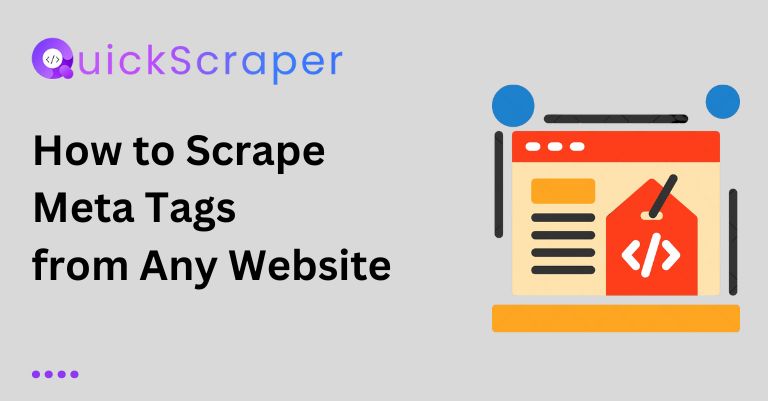
How to Scrape Meta Tags from Any Website Meta tags are snippets of text that describe a website’s content, and search engines use them to
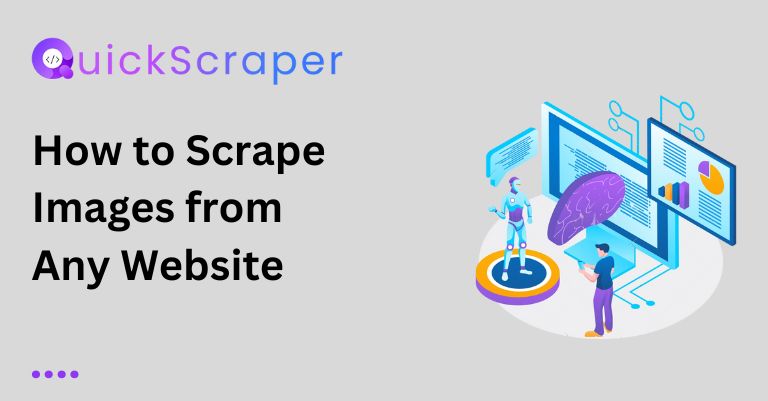
How to Scrape Images from Any Website Scraping images from websites can be a useful technique for various purposes, such as creating image datasets, backing
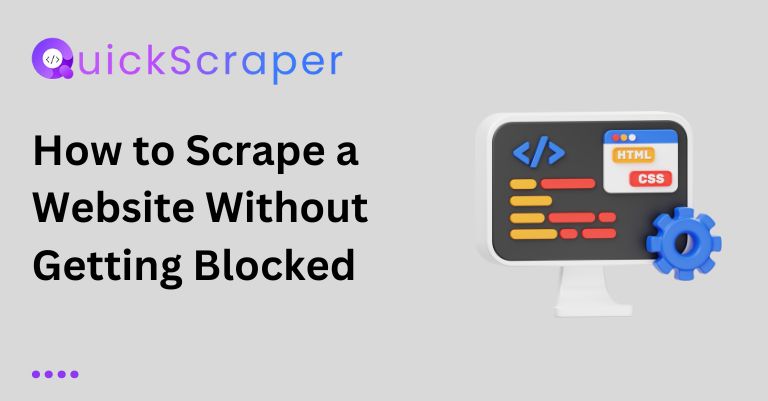
How to Scrape a Website Without Getting Blocked: A Developer’s Guide Web scraping, as a powerful tool, is beneficial for developers, giving them the power
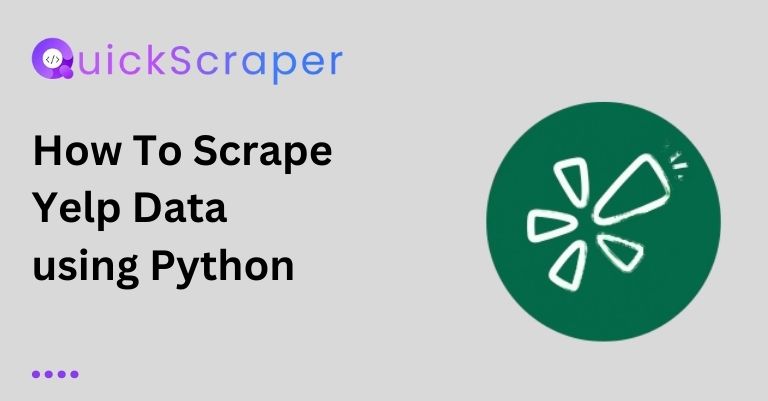
How To Scrape Yelp Data using Python Web scraping is the process of extracting data from websites automatically. In this blog post, we’ll learn

How to Scrape Stock Prices Every Day using Python In this blog post, we will learn how to scrape stock prices from a financial website
By clicking “Accept”, you agree Quickscraper can store cookies on your device and disclose information in accordance with our Cookie Policy. For more information, Contact us.